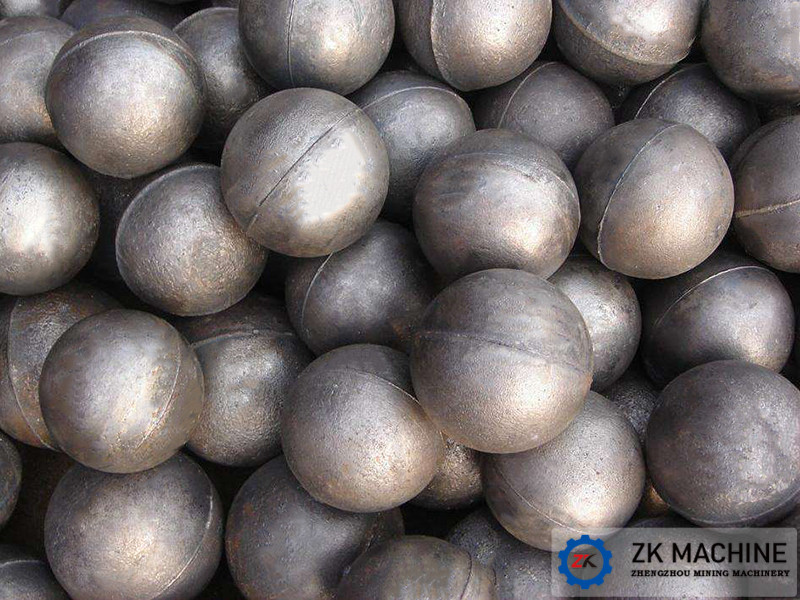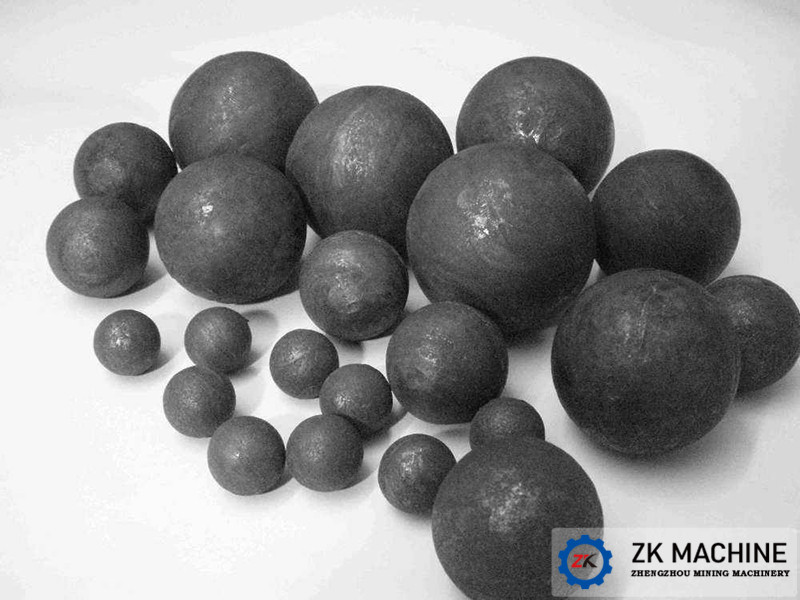1. Steel balls specifications
Under normal circumstances, the diameter of the steel balls of the ball mill is between Φ20mm and Φ125mm (small balls such as 40mm and 60mm , medium balls 80mm, and large balls 100mm or 120mm ), and the diameter of steel balls used in super large ball mills is Φ130mm ~ Φ150mm, etc. .
2. Matching matters of steel balls
Under normal circumstances, the ball mill does not need to add small balls when grinding, because the reasonable friction between the steel balls and the steel balls, the steel balls and the ore, the steel balls and the ball mill lining plate during the normal operation of the ball mill will increase wear, make the big balls smaller and medium balls grind into small balls.

The proportion of steel balls of different sizes is also different, but when the ball mill is first activated, it needs three sizes of large, medium and small balls to be mixed, and the first addition should be added according to 80% of the maximum ball load given by the manufacturer. Because the size and gear of the ball mill need to be meshed after installation, the processing capacity should also be gradually increased. After the ball mill runs normally for two or three days, check the meshing of large and small gears.
After everything is normal, open the ball mill inlet cover and add the remaining 20% steel balls for the second time.
3. Steel balls gradation plan
Formulate the ball mill steel balls gradation plan, usually starting from the first warehouse (ie coarse crushing warehouse). For the multi-silo mill, the steel balls gradation of the first bin is particularly important. According to the general cross-gradation principle, that is, the minimum ball diameter of the previous bin determines the maximum ball diameter of the next bin, so on and so forth, the first warehouse actually dominates the grading of other warehouses.
At present, there are two representative grading methods for the first warehouse of the ball mill: one is to apply the most common multi-level grading method, and the other is the second-level grading method.
(1) Multi-level ball distribution method
This is a traditional ball matching method, usually 4-5 steel balls with different specifications are used for grading. The specific steps are as follows.
① Determine the maximum balls diameter according to the maximum particle size of the grinding material; Determine the average balls diameter according to the average particle size of the grinding material.
②According to the mixing principle of "small two ends and large middle" of the grinding body and the particle size distribution characteristics of the material, the composition ratio of steel balls of each specification is set.
③ Calculate the average diameter of the mixed steel balls after the balls is matched, and compare with the average ball diameter of the original steel balls, add the steel balls according to the size ratio of the steel balls. The proportion of the composition is re-matched until the deviation between the two is small.

(2) Second-level balls matching method
Only two steel balls with a large difference in diameter are used for grading. The diameter of the large balls depends on the particle size of the grinding material, and the diameter of the small balls depends on the size of the gap between the large balls. According to relevant information, the diameter of the small balls should be 13% -33% of the diameter of the large balls. Generally, small balls account for 3% -5% of the mass of large balls. And in principle, it should be ensured that the blending amount of small balls should not affect the filling rate of large balls.
The above is the relevant introduction about the steel balls configuration of the ball mill. For more product information, please call us. Henan Zhengzhou Mining Machinery Co.,Ltd. warmly welcomes new and old customers to cooperate and negotiate business, and look forward to working with you to create a win-win situation!





















